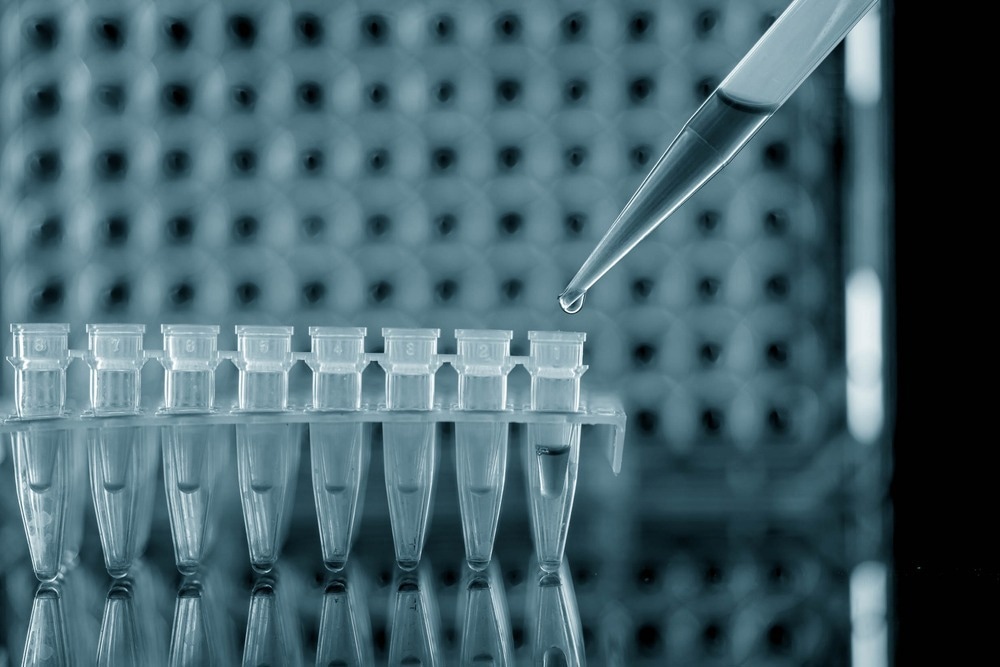The World Health Organization (WHO) declared the recent outbreak of monkeypox virus infections in non-endemic regions a public health emergency of international concern (PHEIC) on July 23, 2022. This has led public health officials in many countries to define guidelines on the early detection, case isolation, and containment measures to mitigate the spread of this virus.
At the start of the coronavirus disease 2019 (COVID-19) pandemic, positive test results were vitiated by contamination and variations in test sensitivity by over one thousand-fold. In order to avoid a loss of confidence in the potentially valuable polymerase chain reaction (PCR) method that can be rapidly deployed when necessary, the authors of a recent Eurosurveillance journal study explore the reliability of this analytical approach for monkeypox diagnosis against the background of its widespread use in the diagnosis of COVID-19.

Study: Monkeypox: Another Test for PCR. Image Credit: luchschenF / Shutterstock.com
Familiar virus
Since monkeypox is not a new virus, several tests are currently available for its diagnosis, which allows researchers to confirm the validity and performance of PCR for monkeypox diagnosis.
Since other pox viruses are quite rare, they are unlikely to be of importance in test specificity. However, the sensitivity of PCR could be impaired due to false negatives if other orthopox viruses are detected by the test.
To optimize their results, the authors provide important precautions that should be taken by laboratories, such as using their own apparatus and specimens to assess the protocols of available tests. Limit of detection (LOD) evaluation and other similar assessments must use quantitatively determined controls similar to the clinical specimen to be tested. With such precautions in place, “Well-designed and optimized assays could be expected to demonstrate near single-copy performance.”
Contamination may rise due to contamination of negative samples from positive samples with a high viral load when both are in the same run. Contamination may also alter the integrity of synthetic templates like amplicons, which is why specimens are prepared separately from the site of analysis.
Positive controls often utilize synthetic oligonucleotides during initial assay development for a new microorganism. Notably, this can also lead to contamination.
Ensuring accuracy
The authors discuss the need to standardize and describe the factors that may impact the accuracy of test results prior to the analysis. Some of these factors may include the choice of swab and specimen, method of specimen collection, and transport medium. Each of these factors influences the final amount and quality of nucleic acid required for the PCR assay.
Appropriate controls need to be established, as they determine the performance of the test by characteristics like the limit of detection (LOD). The use of virus or virus-like particles is preferred over synthetic controls that can only provide positive controls for the PCR step.
With increased surveillance, genetic changes that may affect test performance and increase false-negative results should be identified.
There are already genetic changes to some of the sequences targeted by published PCRs in the monkeypox virus that is currently in circulation.”
Quantitative testing of monkeypox virus DNA is also key to evaluating analytic performance characteristics, as well as changing patterns of the outbreak and disease. This necessitates careful methodologic evaluation to obtain comparable results between different research groups.
In this area, quantitative PCR (qPCR) has become popular due to its automated format. Nevertheless, qPCR provides only a crude quantification that is inappropriate for test threshold determination, actual viral quantification, or LOD reporting unless properly calibrated.
The preferred method for quantification is measuring the number of units of the viral genome in copies per unit volume. This requires the use of normalized standards that have undergone a full characterization and are, as a result, reliable for this type of test evaluation.
Digital PCR (dPCR) is a potential reference material that can be used when other standards of diagnosis are being developed. However, dPCR does not allow high-throughput testing, is less extensively used, and is newer. Nevertheless, this analytical method has provided a valuable comparison point for diagnostic COVID-19 PCR in the current pandemic.
Thus, previously published PCR tests can help apply dPCR in the monkeypox outbreak and value assign monkeypox virus controls quantitatively. These can be used to ensure that diagnostic PCRs conform to performance specifications.
Guidelines
The WHO has provided interim guidelines on testing for monkeypox using PCR. However, these guidelines include some terms that could lead to residual confusion and discrepancies in test results by allowing for different interpretations of key steps in the experimental design, endpoints, quality of samples, nucleic acids, and control materials.
The viral load can influence the ease of detection of viral DNA, as well as the risk of false positives through cross-contamination. Quantification cycle (Cq) values cover values one thousand-fold apart, thus making its interpretation difficult.
Future studies exploring the quantities of monkeypox virus DNA must provide an estimation of how a given Cq value corresponds to viral genome copies.”
Other recommendations have been made by technical committees of the International Standards Organisation (ISO). Experience from the COVID-19 pandemic should be leveraged to maximize the accuracy of the test in similar situations.
Conclusions
While the COVID-19 pandemic brought PCR as a diagnostic method to the forefront worldwide, it also increased the total capacity for molecular testing of various pathogens. The increased testing capacity and experience gained during this period will help shorten the reaction time for a similar response to monkeypox and other new or re-emerging pathogen outbreaks.
The chief priority in any case where PCR is to be used on an extensive scale is to “standardize the laboratory response and implement the lessons learned from COVID-19.” This will help ensure reliable results, build trust, and provide invaluable data to guide public health decisions and patient management.